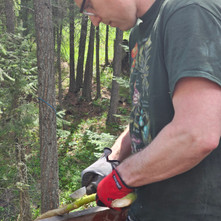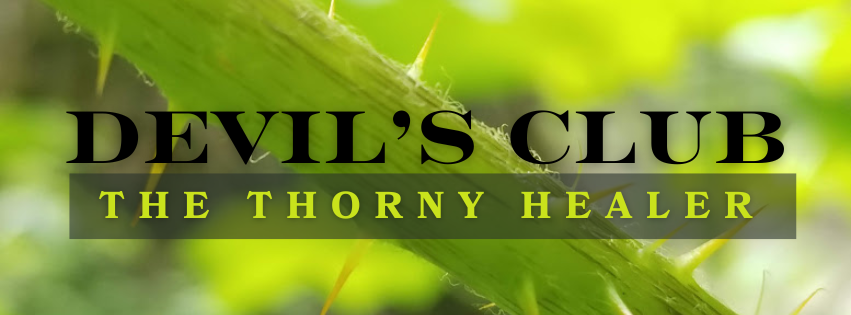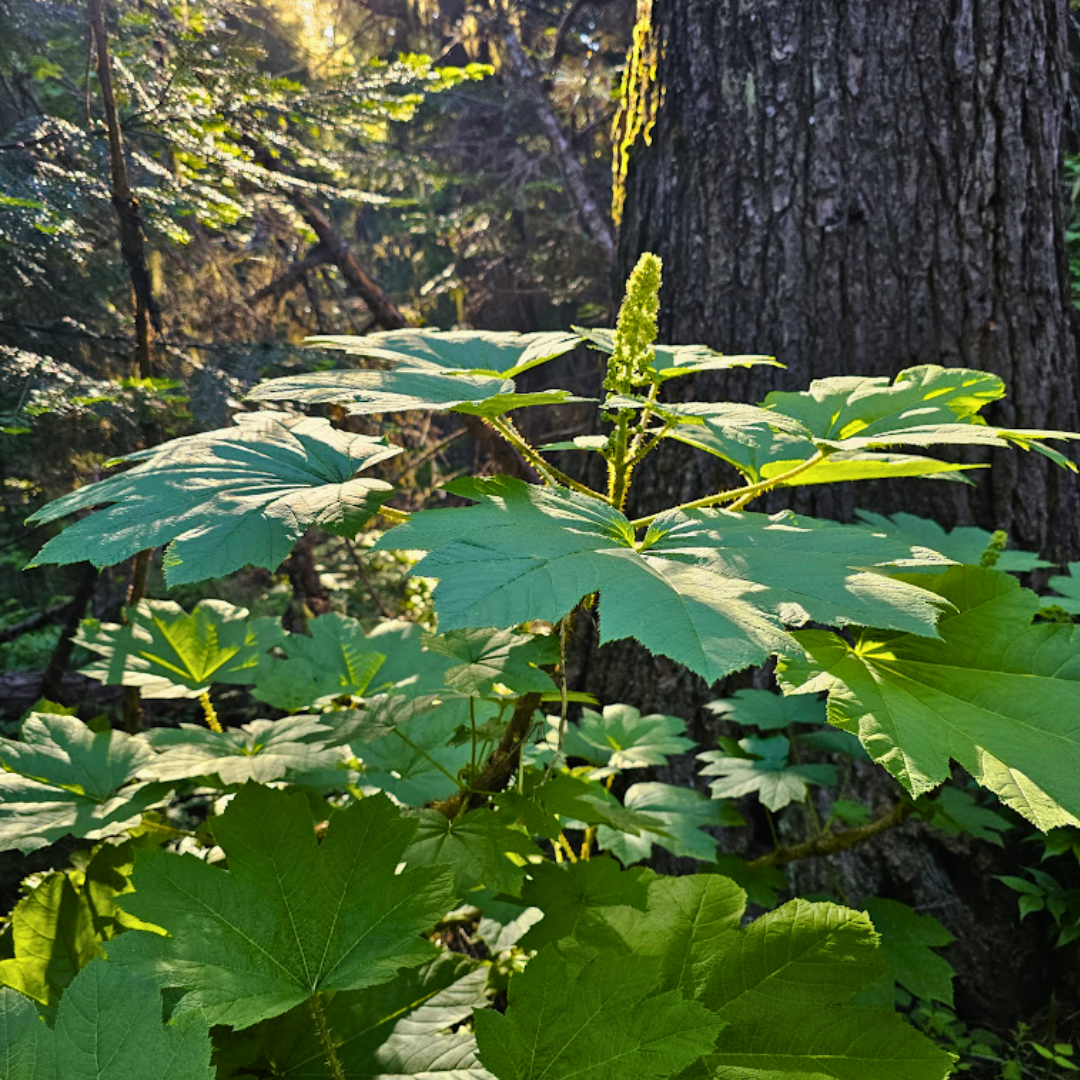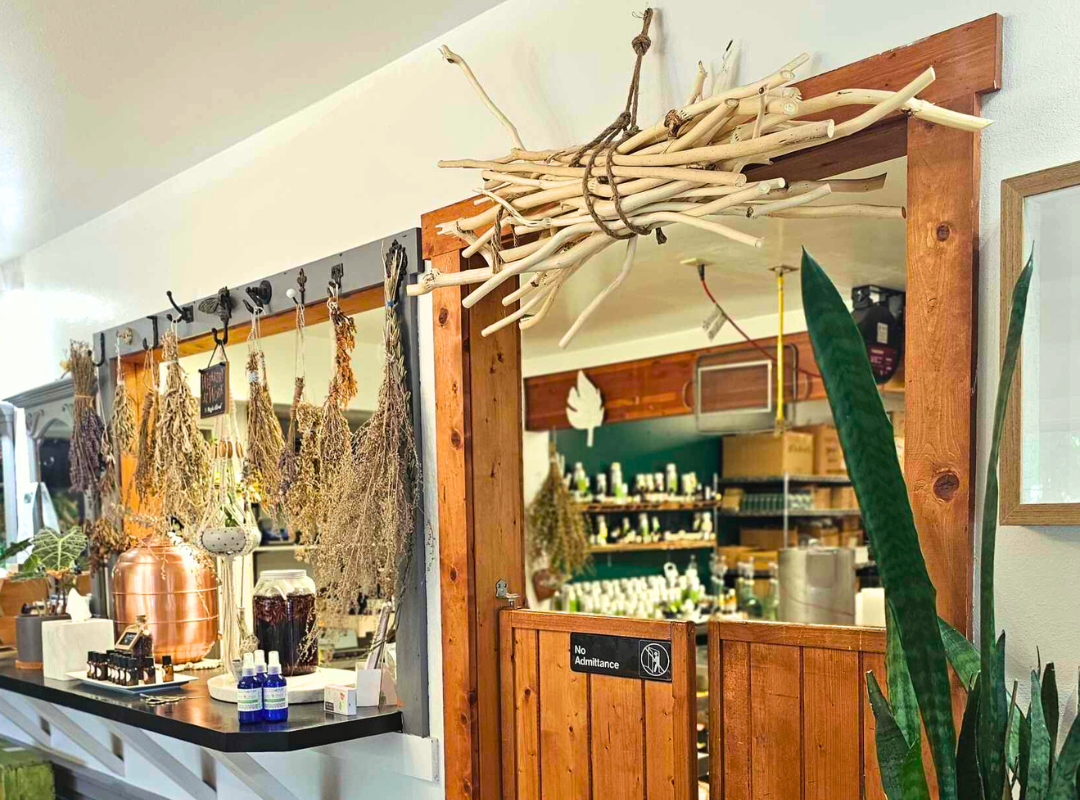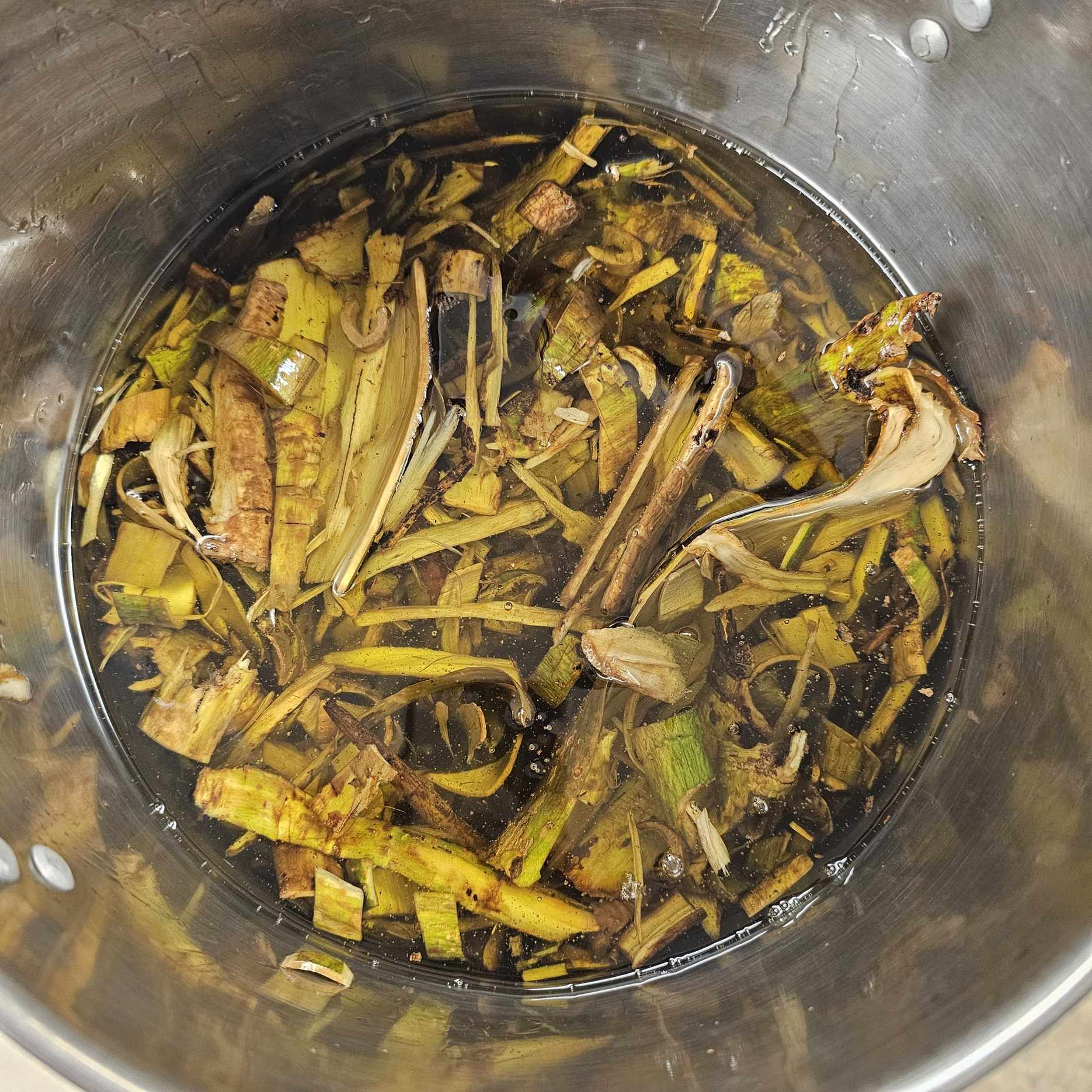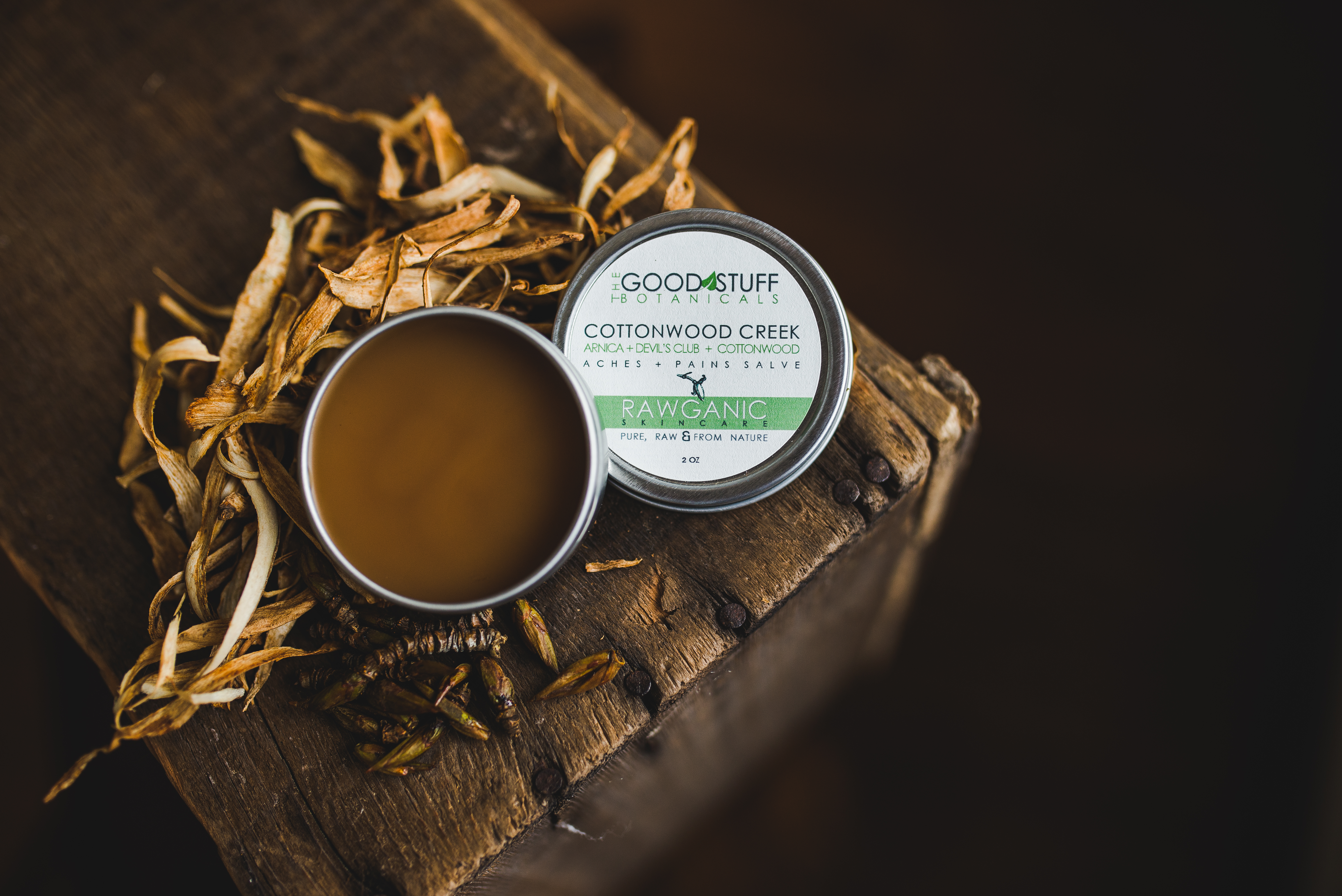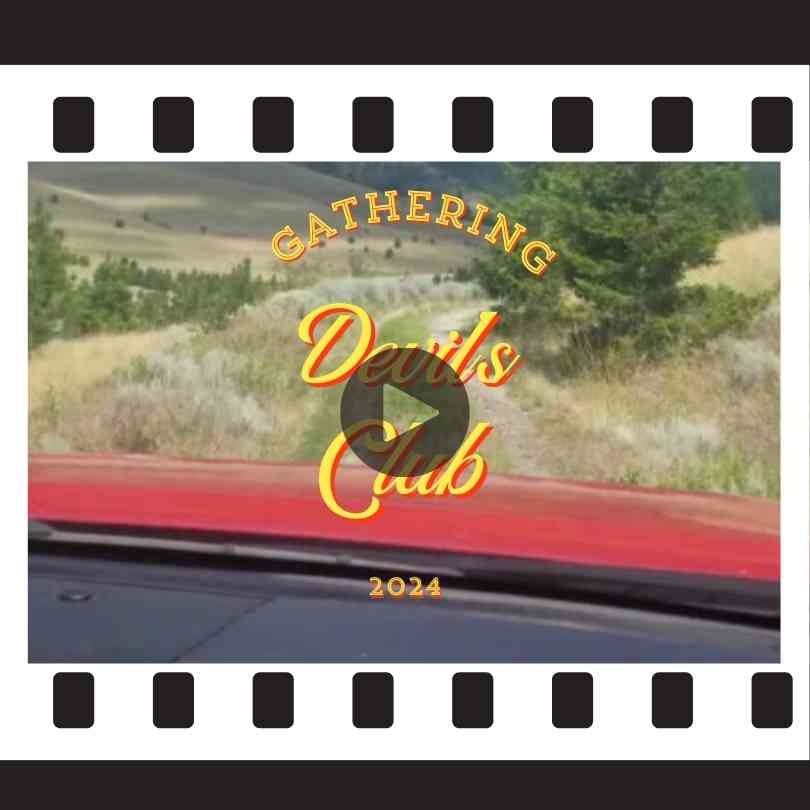The Thorny Healer
Getting know Devil's Club
Deep in the heart of the mountains in Northwest Montana, there thrives a plant that commands both respect and curiosity. Known as Devil’s Club (Oplopanax horridus), this formidable shrub is as much a part of the forest’s lore as it is a beacon of natural medicine.
A Brief History
Ancient Roots and Geographical Spread: Devil’s Club is native to the Pacific Northwest, including parts of Alaska, and is also found on islands in Lake Superior. This large understory shrub is known for its distinctive large palmate leaves and woody stems covered in sharp spines. It has a “primordial” appearance, suggesting its ancient origins and long-standing presence in these forest ecosystems.
The Devil's Club isn't just another plant with a scary name. It's a legend in the Pacific Northwest, used by indigenous cultures for centuries. Here's why it's so special:
- Spiritual Bodyguard: Forget garlic for vampires! Those sharp spikes were believed to ward off evil spirits. People would hang Devil's Club over doorways like a "No Bad Vibes Allowed" sign. Shamans even built special huts with Devil's Club to prepare for important rituals, creating a magical force field to keep out anything unwanted.
If you have ever had the chance to visit our shop in Bigfork, Montana, you might have noticed this bundle of sticks hanging over the doorway to our kitchen. These are devil's club stalks! Our little nod to ancient traditions, can't hurt, right!? - Natural Medicine Cabinet: Feeling under the weather? The Tlingit tribe had a Devil's Club remedy for that! They used it as a tea, salve, or even chewed it raw to fight coughs, colds, stomachaches, and even serious illnesses like tuberculosis. Modern research suggests it might also be helpful for pain, arthritis, and even diabetes.
- Beyond Medicine: Devil's Club wasn't just for the medicine bag. People fashioned it into cool stuff like protective charms, walking sticks, and even fishing lures. It was so versatile! The powdered bark became a natural deodorant, while mashed berries got hair squeaky clean. And the charcoal from burnt Devil's Club? It transformed into face paint for dancers, adding a touch of mystery and toughness.
So, Devil's Club is more than just a prickly plant. It's a symbol of protection, a natural medicine chest, and a reminder of the ingenuity of indigenous cultures!
Devil's Club: Today's Benefits
- Antibacterial and antifungal properties: Devil's Club contains chemicals that may help fight bacteria and fungi. These properties may be beneficial for wound healing and treating infections.
- Anticancer properties: Some studies suggest that Devil's Club may have anticancer properties. However, more research is needed to confirm these effects.
- Anti-inflammatory properties: Devil's Club may also have anti-inflammatory properties. This may be helpful for conditions like arthritis and rheumatism.
- Immune system support: Some people believe that Devil's Club can help boost the immune system. However, more research is needed to confirm this benefit.
- Pain relief: Devil's Club may also help relieve pain. This may be due to its anti-inflammatory properties
⭐⭐⭐⭐⭐" I’m a runner, and I love having this muscle rub on hand for all aches and pains. Smells woodsy and warm!" - Stacy
⭐⭐⭐⭐⭐ "Love this salve, my hands have been in a lot of pain (from yard work and strained muscles). I rubbed this on before going to bed and woke up with zero pain! It also smells amazing, very woodsy :)" - Susanne
⭐⭐⭐⭐⭐ "I love this product!!!! It relaxes me And it helps with my pain! I have a few herniated discs in my neck and degenerative disc disease with arthritis and this stuff is awesome! It has arnica which is a wonder plant!" - Cindy
⭐⭐⭐⭐⭐ " I am a 68 year old male and Cottonwood Creek lets me do the things I want, even when I know they might hurt, because I can get relief in short order. I had shoulder surgery a few years ago and it provides relief there for when I overdo things, which is always, and my clumsy feet also always need special attention at the end of a long day. Good stuff!"How We Gather Devil's Club
Click the video above and go on a wildcrafting adventure with us and see what it takes to collect and process Devil's Club to go into our muscle salve, Cottonwood Creek!

